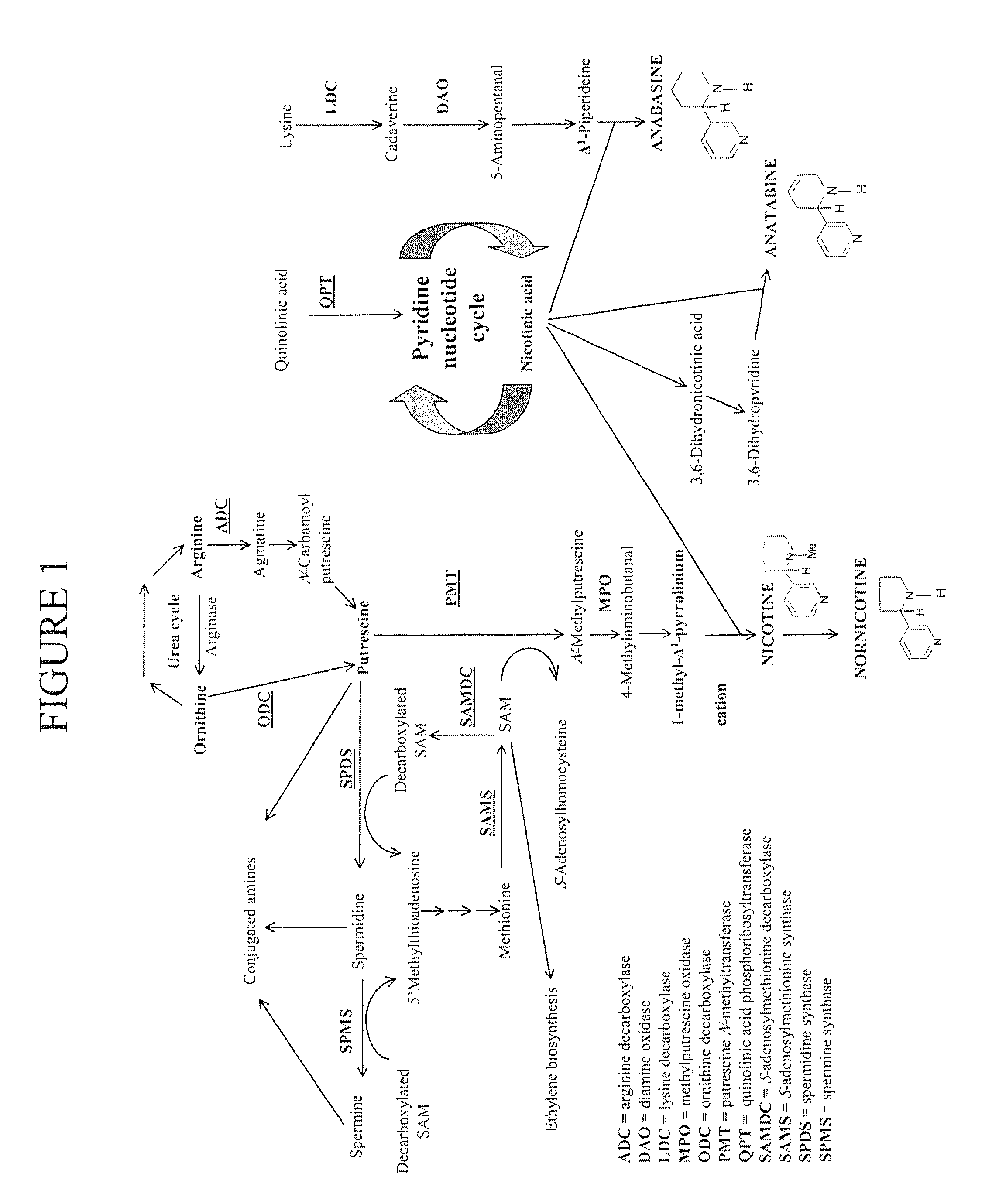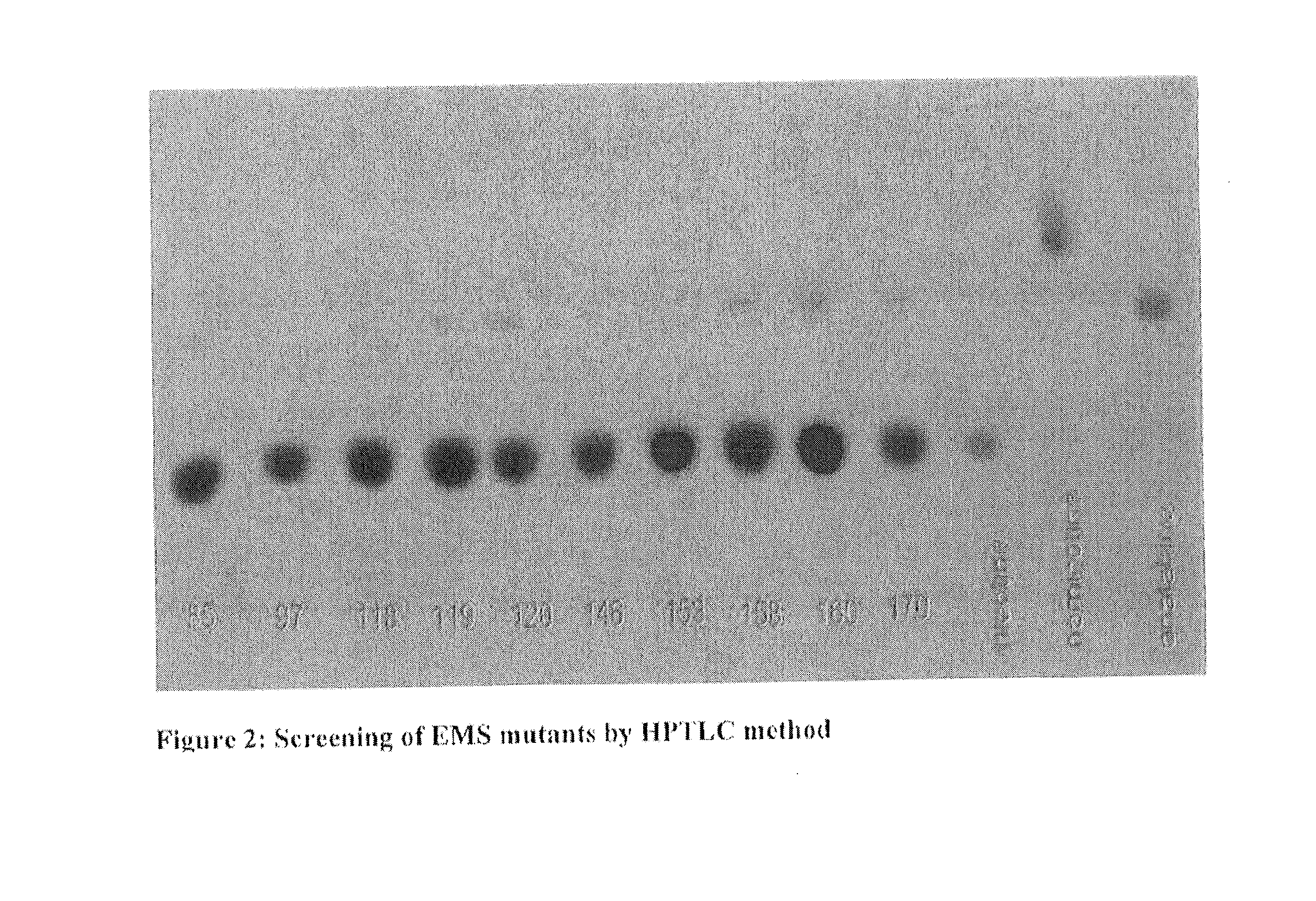Development of tobacco varieties with no or significantly reduced anatabine content
a tobacco variety and content technology, applied in the field of development of tobacco varieties with no or significantly reduced anatabine content, can solve the problems of no commercially relevant tobacco variety with reduced anatabine in leaf lamina, and achieve the effects of reducing and/or eliminating anatabine biosynthesis in tobacco, reducing tsna accumulation, and reducing the total tsna
- Summary
- Abstract
- Description
- Claims
- Application Information
AI Technical Summary
Benefits of technology
Problems solved by technology
Method used
Image
Examples
example i
[0023]A novel genetic variation in a population of tobacco plants was created to identify plants that have lost the ability to biosynthesize anatabine. These plants are very likely to have a mutated non-functional version of one or more genes critical for anatabine biosynthesis. To induce novel genetic variation plants were treated with Ethyl methane sulfonate (EMS) and propagated to the M2 stage so that recessive mutations would express in plants homozygous for mutated genes.
[0024]A population of the Flue-cured variety “401” and TN90 was available for this investigation. Approximately 5000 seeds per variety were treated with 0.8% ethyl methane sulfonate and germinated. M1 plants were grown in the field and M2 seeds were collected. Approximately 2000 FC401 M2 and 500 TN90 M2 seeds were germinated and grown in 6″ pots. At 50% flowering stage, plants were topped and leaf samples were collected after 2 weeks of topping.
[0025]Alkaloids were extracted from the leaf samples: 1 ml methanol...
PUM
| Property | Measurement | Unit |
|---|---|---|
| Fraction | aaaaa | aaaaa |
| Fraction | aaaaa | aaaaa |
| Content | aaaaa | aaaaa |
Abstract
Description
Claims
Application Information
 Login to View More
Login to View More - R&D
- Intellectual Property
- Life Sciences
- Materials
- Tech Scout
- Unparalleled Data Quality
- Higher Quality Content
- 60% Fewer Hallucinations
Browse by: Latest US Patents, China's latest patents, Technical Efficacy Thesaurus, Application Domain, Technology Topic, Popular Technical Reports.
© 2025 PatSnap. All rights reserved.Legal|Privacy policy|Modern Slavery Act Transparency Statement|Sitemap|About US| Contact US: help@patsnap.com



